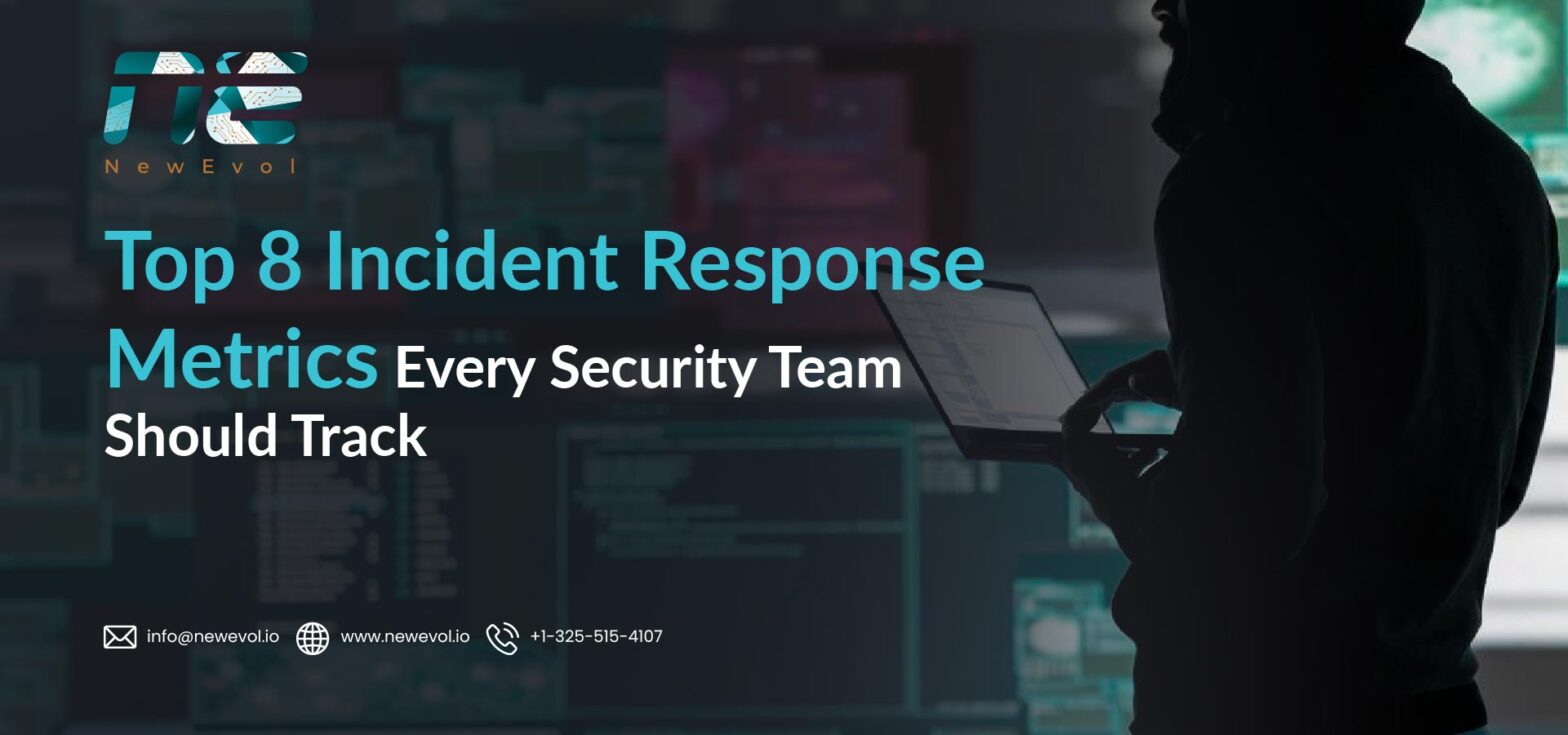Top 8 Incident Response Metrics Every Security Team Should Track

Cyber attacks are inevitable, but how quickly and effectively a security team responds can make all the difference. That’s where incident response metrics come in.
By tracking the right numbers, US security teams can see how fast threats are detected, how quickly they are contained, and where improvements are needed. These metrics help reduce damage, improve efficiency, and guide smarter decision-making.
In this blog, we’ll cover the top 8 incident response metrics every security team in the US should track to stay ahead of cyber threats.
Why Incident Response Metrics Matter
Incident response isn’t just about reacting to attacks—it’s about measuring how well you respond. Metrics give US security teams a clear view of performance and gaps.
- Faster Detection and Response: Tracking metrics like MTTD and MTTR helps teams spot weaknesses and act faster.
- Better Resource Allocation: Metrics show where extra attention or staffing is needed.
- Reduced Risk: Monitoring trends and repeat incidents allows teams to fix vulnerabilities before they become major breaches.
- Proving Value to Leadership: Metrics clearly show management how the security team is protecting the organization and where improvements are happening.
In short, metrics turn data into action, helping teams defend their organization more effectively.
Top 8 Incident Response Metrics
Tracking the right metrics helps US security teams understand performance and improve response. Here are the top 8 incident response metrics every team should monitor:
1. Mean Time to Detect (MTTD)
The time it takes to spot a security incident from when it occurs. Faster detection reduces potential damage.
2. Mean Time to Respond (MTTR)
The time it takes to contain and resolve an incident after detection. Lower MTTR shows an efficient response process.
3. Number of Incidents Detected
Total security incidents over a period. Helps teams identify trends and workload patterns.
4. Incident Severity Levels
Classifying incidents as low, medium, high, or critical helps prioritize response and allocate resources effectively.
5. False Positive Rate
The percentage of alerts that turn out to be non-threats. Lower false positives save time and reduce alert fatigue.
6. Containment Rate
The percentage of incidents fully contained within the defined service-level agreement (SLA). Higher rates indicate strong controls.
7. Post-Incident Recovery Time
How long it takes to restore affected systems or services after an incident. Shorter recovery times minimize disruption.
8. Repeat Incident Rate
The frequency of recurring incidents or vulnerabilities. Tracking this helps teams focus on root-cause fixes, not just quick patches.
How to Collect and Analyze These Metrics
Collecting and analyzing incident response metrics doesn’t have to be complicated. Here’s how US security teams can do it effectively:
- Use the Right Tools: SIEM, SOAR, and TIPs can automatically capture data on detections, response times, and incident details.
- Centralize Data: Keep all incident information in a single dashboard for easy tracking and reporting.
- Automate Reporting: Generate regular reports for the team and leadership to spot trends and measure improvements.
- Set Baselines: Know what normal performance looks like so you can detect unusual activity quickly.
- Analyze Trends: Look for patterns like recurring incidents, high false positives, or slow responses to prioritize improvements.
- Share Insights: Make findings actionable by sharing recommendations with the team and stakeholders for better risk mitigation.
Best Practices for Using Metrics
Tracking metrics only helps if you use them the right way. US security teams should follow these best practices:
- Focus on Actionable Metrics: Track numbers that show performance and help improve response, not just for reporting.
- Regular Reviews: Analyze metrics weekly or monthly to spot trends, recurring issues, and areas for improvement.
- Align Metrics with Goals: Ensure metrics reflect organizational priorities, risk appetite, and compliance requirements.
- Avoid Metric Overload: Don’t track too many metrics at once; focus on the ones that truly matter.
- Context Matters: Consider incident severity, type, and impact alongside the raw numbers.
- Continuous Improvement: Use metrics to guide process updates, team training, and tool optimization.
Following these best practices helps security teams turn raw data into actionable insights, improving incident response and reducing the impact of cyber attacks.
Common Pitfalls in Incident Response Metrics
Even the best metrics can be misleading if not used correctly. US security teams should watch out for these common pitfalls:
- Tracking Too Many Metrics: Focusing on every number can overwhelm teams and dilute attention from the most important ones.
- Inconsistent Definitions: Different teams may measure metrics differently, making comparisons and trends unreliable.
- Ignoring Context: Looking at numbers alone without considering severity or business impact can give a false sense of security.
- Overlooking False Positives: High false-positive rates can inflate metrics and mislead decision-making.
- Not Acting on Insights: Collecting metrics without taking corrective action defeats the purpose of measurement.
How NewEvol Helps Security Teams
Tracking and improving incident response metrics can be complex, but NewEvol makes it easier for US security teams:
- Integrated Monitoring: Connect SIEM, SOAR, and threat intelligence platforms to track detections, response times, and incident severity.
- Automated Reporting: Generate dashboards and reports highlighting trends, recurring issues, and actionable insights.
- Managed SOC Services: 24/7 monitoring and incident handling reduce workload for in-house teams while maintaining high efficiency.
- Proactive Threat Hunting: Identify threats early and prevent recurring incidents, lowering repeat incident rates.
- Optimization & Guidance: Analyze metrics to improve workflows, response processes, and team performance, ensuring faster MTTR and MTTD.
End Note
Incident response metrics are essential for security teams to detect threats faster, respond effectively, and reduce the impact of cyber attacks. By tracking metrics like MTTD, MTTR, containment rates, and repeat incidents, teams can identify weaknesses, optimize workflows, and improve overall security posture.
With solutions from NewEvol, organizations can integrate monitoring, reporting, and threat intelligence into their workflows, enabling smarter decisions and proactive risk mitigation. Metrics aren’t just numbers—they’re a roadmap to stronger, faster, and more effective incident response.
FAQs
-
What is the KPI for security incident response?
Key KPIs include Mean Time to Detect (MTTD), Mean Time to Respond (MTTR), containment rate, and false positive rate.
-
What are the 7 phases of incident response in cyber security?
According to NIST, the phases are: Preparation, Identification, Containment, Eradication, Recovery, Lessons Learned, and Continuous Improvement.
-
What are the incident response metrics for cyber security?
Common metrics include MTTD, MTTR, number of incidents, severity levels, false positive rate, recovery time, and repeat incident rate.
-
What is the NIST standard for incident response?
The NIST Cybersecurity Framework (SP 800-61r2) provides guidelines for building and managing effective incident response programs.

